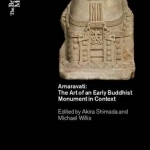Amaravati: The Art of an Early Buddhist Monument in Context
BookThis item doesn’t have any media yet
2017 | Art, Photography & Fashion
Buddhism originated in north India and spread to other parts of the subcontinent in the third century BCE. The Andhra region, located along the south-east coast of India, welcomed Buddhism and a stupa, probably built to house a relic of the Buddha from the north, was constructed at Amaravati. From 200 BCE, the stupa was enlarged and substantially embellished over several centuries, making it one of the most important Buddhist monuments in India. However, the stupa fell into decline from the 14th century and it was re-discovered and excavated only in the 19th century. In 1880 more than 120 of the Amaravati sculptures entered the collection of the British Museum, with other pieces eventually finding their way to museums in India, Europe and America. The papers in this book emerged from a conference at the British Museum held in September 2014 that brought together leading specialists from around the world to address aspects of Amaravati and its sculpture. Subjects covered in this volume include the rediscovery of the stupa at the end of the 18th century as well as its recreation in the 21st century.
The art of Amaravati is also placed in the context of other sites and remains from the Andhra region which, despite its importance, has been relatively neglected in the study of the religious and visual cultures of South Asia.
Related Items:
| Published by | British Museum Press |
| Edition | Unknown |
| ISBN | 9780861592074 |
| Language | N/A |
Images And Data Courtesy Of: British Museum Press.
This content (including text, images, videos and other media) is published and used in accordance
with Fair Use.
